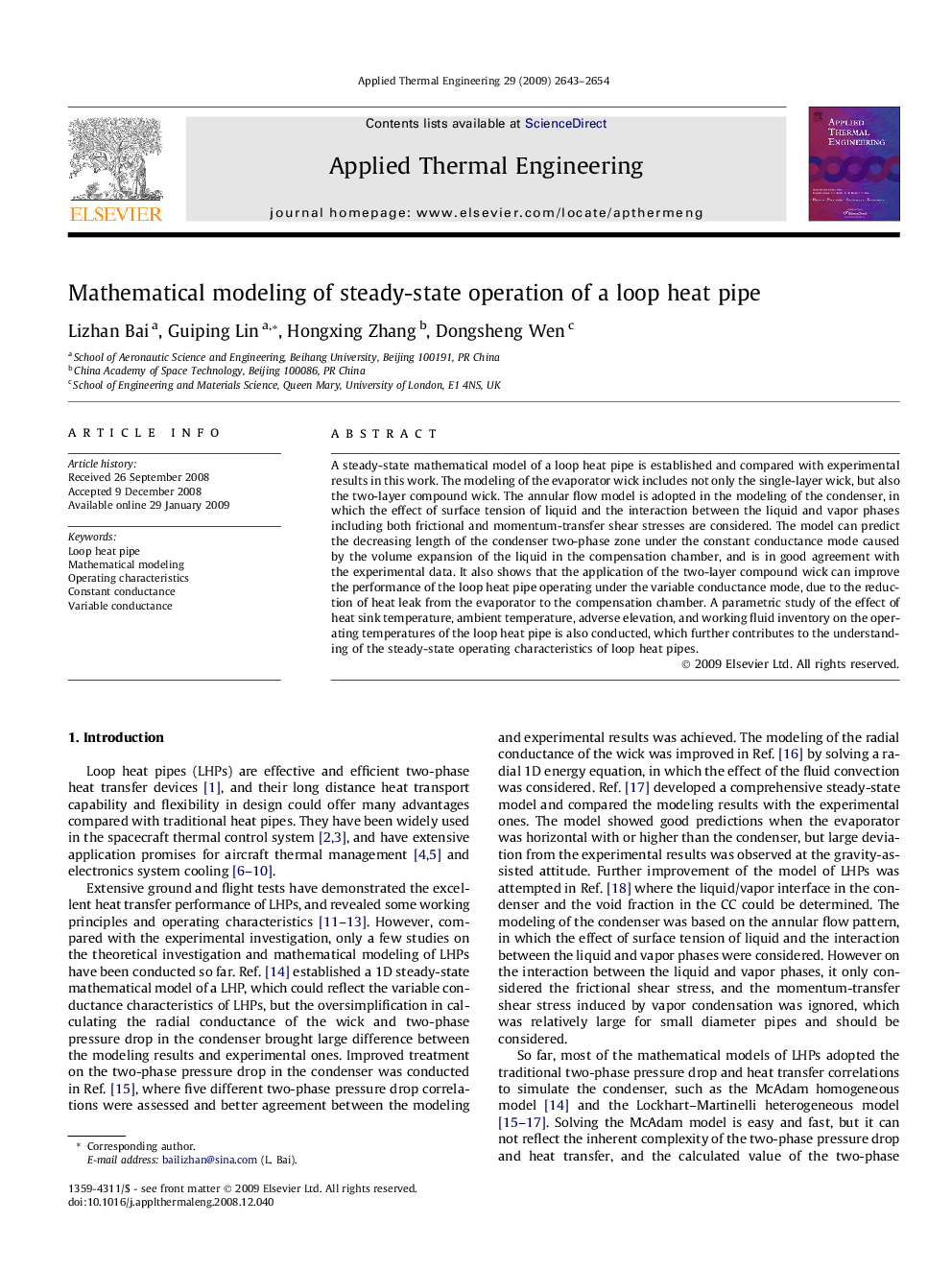| Article ID | Journal | Published Year | Pages | File Type |
|---|---|---|---|---|
| 649075 | Applied Thermal Engineering | 2009 | 12 Pages |
Abstract
A steady-state mathematical model of a loop heat pipe is established and compared with experimental results in this work. The modeling of the evaporator wick includes not only the single-layer wick, but also the two-layer compound wick. The annular flow model is adopted in the modeling of the condenser, in which the effect of surface tension of liquid and the interaction between the liquid and vapor phases including both frictional and momentum-transfer shear stresses are considered. The model can predict the decreasing length of the condenser two-phase zone under the constant conductance mode caused by the volume expansion of the liquid in the compensation chamber, and is in good agreement with the experimental data. It also shows that the application of the two-layer compound wick can improve the performance of the loop heat pipe operating under the variable conductance mode, due to the reduction of heat leak from the evaporator to the compensation chamber. A parametric study of the effect of heat sink temperature, ambient temperature, adverse elevation, and working fluid inventory on the operating temperatures of the loop heat pipe is also conducted, which further contributes to the understanding of the steady-state operating characteristics of loop heat pipes.
Related Topics
Physical Sciences and Engineering
Chemical Engineering
Fluid Flow and Transfer Processes
Authors
Lizhan Bai, Guiping Lin, Hongxing Zhang, Dongsheng Wen,
